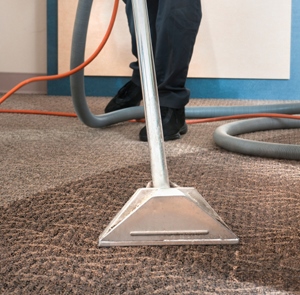 November 2, 2015
November 2, 2015
Winter Weather Carpet Care Strategies

Most carpet cleaning technicians will tell you the winter months, from about late November to mid-April, are their slowest time of the year. That’s because people may think it’s best to postpone cleaning carpets during those months, assuming floors will just be re-soiled again due to the weather. While this may get by in a residential setting, this is not the best strategy for most commercial buildings.
Steps to Take
Maintaining carpets during the winter months is not that different from keeping carpets clean throughout the year. However, the frequency with which cleaning tasks are performed, along with a few other measures, is slightly different during the winter months. The following steps should be taken to keep carpets healthy:
- Clean carpets before winter weather arrives. The goal is to start with a clean slate in order to keep carpets looking clean and fresh throughout the winter months.
- Put more emphasis on first-floor areas. While these should be a year-round activity, vacuuming and cleaning first-floor areas are much more critical during the winter months. Keeping the first floor clean reduces the amount of soil and contaminants carried to the upper floors.
- Select high-performance matting. Many facilities rent their mats. While rental mats can be adequate in some situations, installing high-quality matting, which typically must be purchased, tends to be much more effective at preventing soil and moisture from being carried onto carpets and floors.
- Increase vacuuming frequency. If carpets are cleaned once per day, this probably should be increased to twice per day on lower floors and increased even further in or near lobby areas.
- Use and service high-efficiency vacuum cleaners. High-efficiency vacuum cleaners should be used during the winter months. The start of winter should also be a reminder for administrators and housekeeping departments to inspect their vacuum cleaners, checking belts, beater bars, brush agitators, etc. Taking a proactive approach to vacuum care can help delay or prevent bigger service problems later in the season.
- Pay closer attention to transition areas. A transition area is a place where a carpeted floor meets a hard surface, such as a walkway from a cafeteria or storage area to a carpeted area or an elevator banks. Transition areas tend to be more heavily trafficked and, as a result, become more soiled—especially during the winter months. Those areas need more frequent vacuuming.
- Carpet elevators. Elevators can transport soil from one floor to another. Carpeting an elevator can help trap outdoor and lower-floor soil and moisture, preventing these contaminants from traveling throughout the facility.
- Double up efforts to remove spots. The longer a spot sits on carpet fibers, the more difficult it can be to remove. In addition, spots are typically water- or oil-based, which means they can collect on shoe bottoms and spread to other areas of a facility.
Source: http://www.facilitycare.com/building-blocks/flooringwallcovering/winter-weather-carpet-care-strategies
